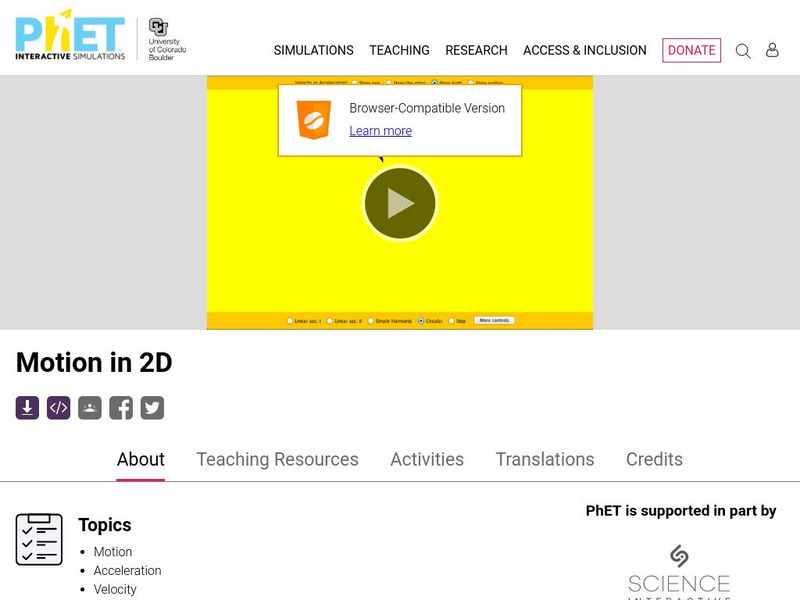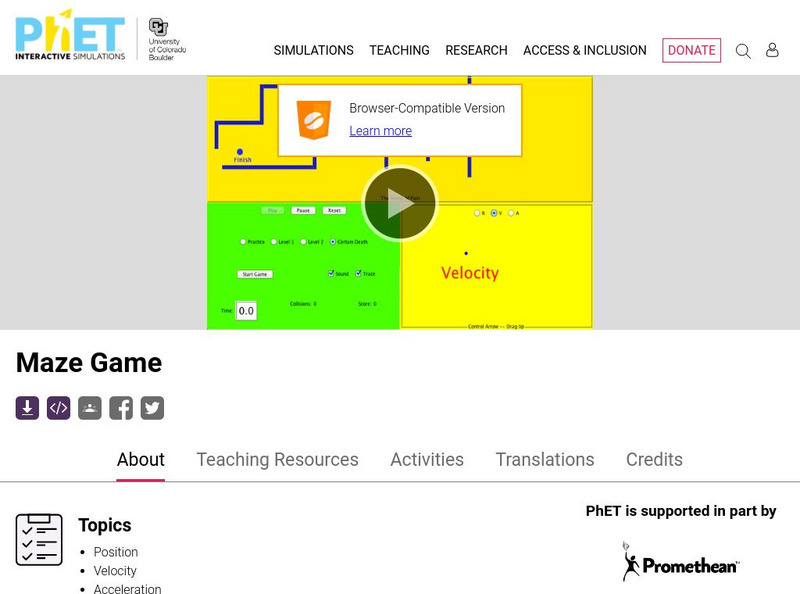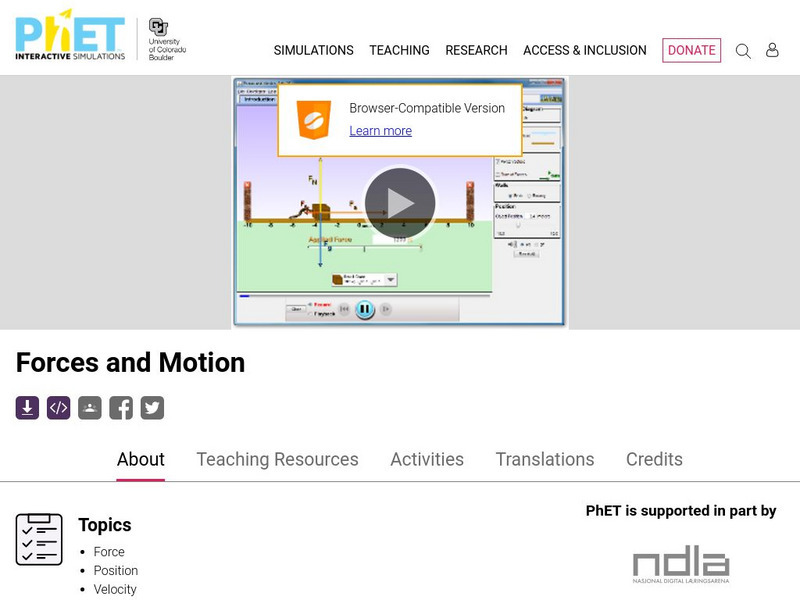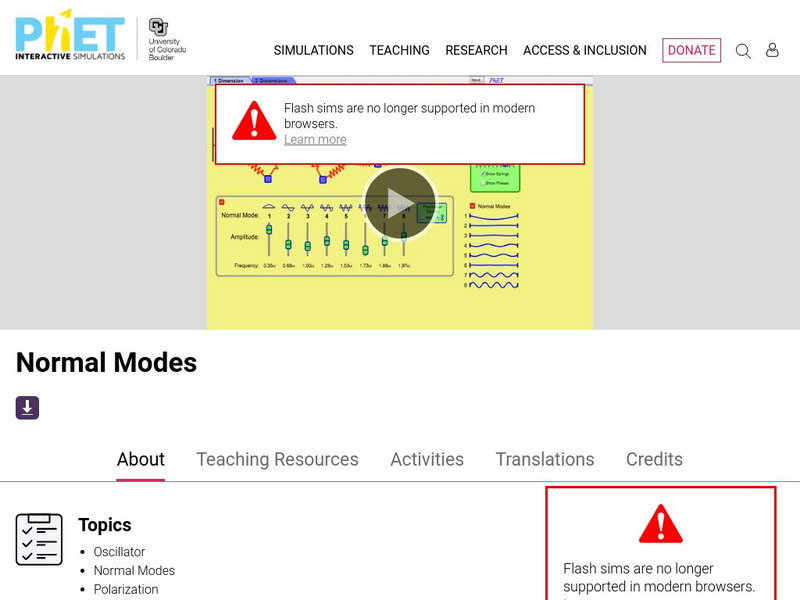Curated OER
Place Value Partners
In these place value game worksheets, students pair with a partner and use the game boards to place number tiles on the place value strips that list place values from ones to millions. Students place the tiles and name the digit and...
Curated OER
The Cuisenaire Four-Pan Algebra Balance: Limitations and Suggestions
Students illustrate the concept of balancing equations using a Four-Pan Algebra Balance. In this balancing lesson, students visualize why it is necessary to add or subtract the same quantity on both sides of an equation when solving...
Curated OER
Parts of Speech
For this parts of speech worksheet, students recognize affirmative and negative expressions. Students put the correct response in ten sentences.
Curated OER
Food and Languages of the World
Learners examine Japanese culture. In this multicultural lesson plan, students taste rice crackers and create Japanese fans from paper and paint.
Curated OER
A Unique Circus
In this vocabulary learning exercise, students chose the word that will best fit in the sentence from the word bank. Students will chose between, verbs and nouns to complete their learning exercise.
Curated OER
Succession and Microclimate
Students compare the population of insects in different microclimates. For this biology lesson, students collect data using probes to tabulate temperature and soil data. They predict how certain parameters change as an area goes...
Curated OER
Investigating Sources-Artifacts
Learners discuss artifacts. In this social science lesson, students realize that artifacts can help one in determining about the person the artifacts belonged to. Learners will be put into small groups and will look at objects from a box...
Curated OER
Vectors
Students differentiate distance and displacement. In this physics lesson, students use formulas to calculate for displacement. They draw vectors using the grid.
Curated OER
Science: Trouble in the Troposphere
Students research a NASA Website and record information about an assigned city's tropospheric ozone residual monthly climate. In groups, they graph the information for the past year. They form new groups and compare their city's...
Other
Wosu Public Media: Are You Digi Fit?: Choose to Be Positive With Others Online
This lesson teaches children how to behave appropriately when interacting with others online. They are guided in understanding how their words can be perceived by others online and how to deal with an online bully. Includes links to two...
Alabama Learning Exchange
Alex: Let's Go Fishing for Positive and Negative Integers
This lesson plan will actively engage students in a fishing tournament that uses ordered pairs to catch fish. As students begin to catch the hidden fish, they will find a relationship between the integers in the ordered pairs. By...
Government of Alberta
Learn Alberta: Math Interactives: Patterning the Powers of 10
This interactive Learn Alberta math resource offers a hands-on exploration of positive and negative exponents. In particular, students will work on completing patterns of base 10 exponents in a variety of forms, then look at these in the...
University of Colorado
University of Colorado: Ph Et Interactive Simulations: Ladybug Motion 2 D
Manipulate a ladybug's position, velocity, and acceleration, and see how the vectors change in this interactive simulation. Software download is necessary.
University of Colorado
University of Colorado: Ph Et Interactive Simulations: Ladybug Motion 2 D
Learn about position, velocity, and acceleration vectors by moving the ladybug. Set the position, velocity, or acceleration, and see how the vectors change.
University of Colorado
University of Colorado: Ph Et Interactive Simulations: My Solar System
An interactive simulation that teaches about motion, acceleration, and velocity by allowing students to build their own solar system and watch the effects of gravitational pull and how that changes with initial position, velocity, and...
University of Colorado
University of Colorado: Ph Et Interactive Simulations: The Moving Man
Learn about position, velocity, and acceleration graphs. Move the little man back and forth with the mouse and plot his motion, and then set the position, velocity, or acceleration and let the simulation move the man for you.
University of Colorado
University of Colorado: Ph Et Interactive Simulations: Motion in 2 D
Try the new "Ladybug Motion 2D" simulation for the latest updated version of the original game. Learn about position, velocity, and acceleration vectors.
University of Colorado
University of Colorado: Ph Et Interactive Simulations: Maze Game
Learn about position, velocity, and acceleration in the "Arena of Pain." Use the green arrow to move the ball. Add more walls to the arena to make the game more difficult. Try to make a goal as fast as you can.
University of Colorado
University of Colorado: Ph Et Interactive Simulations: Charges and Fields
Arrange positive and negative charges in space and view the resulting electric field and electrostatic potential. Plot equipotential lines and discover their relationship to the electric field. Create models of dipoles, capacitors, and...
University of Colorado
University of Colorado: Ph Et Interactive Simulations: Forces and Motion
Explore the forces at work when you try to push a filing cabinet. Create an applied force and see the resulting friction force and total force acting on the cabinet. Charts show the forces, position, velocity, and acceleration vs. time.
University of Colorado
University of Colorado: Ph Et Interactive Simulations: Normal Modes
An interactive simulation that teaches about oscillators, normal modes, and polarization by varying the number of masses and initial conditions to determine their effect on 1D or 2D systems of coupled mass-spring oscillators. This...
University of Colorado
University of Colorado: Ph Et Interactive Simulations: Balloons and Static Electricity
Investigate static electricity by rubbing a balloon on a sweater and observing what happens. Try it with two balloons. See the positive and negative charges that illustrate why there is attraction or repulsion between the balloons, the...
Physics Classroom
The Physics Classroom: Kinematics: Graph That Motion Interactive
Apply the principles of kinematic graphing to match the motion of eleven objects with their corresponding graphical descriptions. Students must understand how the shape of position-time and velocity-time graphs relate to a motion.
Other
Brainspire: What Are the Effects of Technology on Human Interaction?
This article examines the positive and negative ways that technology impacts human interactions and relationships within families and with the wider world, as well as the implications the over-use of technology has on the growing child....





















